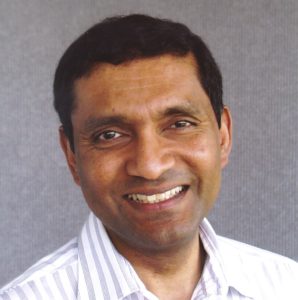Introduction to Scanning Probe Microscopy
Prof. H. Kumar Wickramasinghe, University of California Irvine
Abstract

Scanning Probe Microscopy (SPM) encompasses a family of microscopes capable of probing a variety of Physical and Chemical properties of surfaces at the nanometer scale. At the heart of the instrument is a sharp probe tip with radius on the order of a few nanometers and typically made out of single crystal silicon. A piezoelectric transducer is used to approach the tip to the sample along the z direction and a feedback loop stabilizes the tip just nanometers from the sample surface. The position of the tip is recorded as the sample is raster scanned, relative to the tip, point by point in x and y to record an image. In this talk, we will track some of the major milestones in the development of SPM which today can measure a variety of different properties of surfaces such as optical, magnetic, chemical, electrical and thermal all on the nanoscale.
Biosketch

H. Kumar Wickramasinghe is currently UCI Distinguished Professor of Electrical Engineering and Computer Science and holds the Henry Samueli Endowed Chair Professorship in Electrical Engineering and Computer Science, Biomedical Engineering and Chemical Engineering and Materials Science at UC Irvine. He earned his Ph.D in Electrical Engineering from the University College London in 1974. Following a three year Research Associate appointment at the E.L. Ginzton laboratory at Stanford, he joined the Electrical Engineering Department at University College London as a faculty member in 1978. From 1984 to 2006 he was at the IBM Research Division where he held several executive positions including IBM Fellow, Chief Scientist Manufacturing Research, and CTO Science and Technology, IBM Almaden Research Center. While at IBM, he pioneered the development and spin-off of the vibrating mode atomic force microscope and a range of scanning microscopes such as the magnetic force microscope, the Kelvin probe force microscope, the scanning thermal microscope, and the apertureless near-field optical microscope (sSNOM). He is a Fellow of the Royal Society, Member of the National Academy of Engineering, Fellow of the National Academy of Inventors, Fellow IEEE, APS and Inst of Phys.
